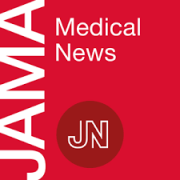Posted on July 12, 2016
Source: JAMA

Association of Medical Male Circumcision and Antiretroviral Therapy Scale-up With Community HIV Incidence in Rakai, Uganda
Xiangrong Kong, PhD; Godfrey Kigozi, MB, ChB, PhD; Joseph Ssekasanvu, MS; Fred Nalugoda, PhD; Gertrude Nakigozi, MD, MPH;
Anthony Ndyanabo, MSc; Tom Lutalo, MS; Steven J. Reynolds, MD, MPH; Robert Ssekubugu, MHS; Joseph Kagaayi, MB, ChB, PhD;
Eva Bugos, BS; Larry W. Chang, MD, MPH; Pilgrim Nanlesta, PhD; Grabowski Mary, PhD; Amanda Berman, MSPH, MPhil;
Thomas C. Quinn, MD; David Serwadda, MB, ChB, MMed, MPH; Maria J. Wawer, MD, MSH; Ronald H. Gray, MD, MSc
Importance Medical male circumcision (MMC) and antiretroviral therapy (ART) are proven HIV prevention interventions, but there are limited data on the population-level effect of scale-up of these interventions in sub-Saharan Africa. Such evaluation is important for planning and resource allocation.
Objective To examine whether increasing community MMC and ART coverage was associated with reduced community HIV incidence in Rakai District, Uganda.
Design, Setting, and Participants Using person-level data from population-based surveys conducted from 1999 through 2013 in 45 rural Rakai communities, community-level ART and MMC coverage, sociodemographics, sexual behaviors, and HIV prevalence and incidence were estimated in 3 periods: prior to the availability of ART and MMC (1999-2004), during early availability of ART and MMC (2004-2007), and during mature program scale-up (2007-2013).
Exposures Community MMC coverage in males and ART coverage in HIV-positive persons of the opposite sex based on self-reported MMC status and ART use.
Main Outcomes and Measures Adjusted incidence rate ratios (IRRs) for sex-specific community HIV incidence estimated using multivariable Poisson regression with generalized estimating equations.
Results From 1999 through 2013, 44 688 persons participated in 1 or more surveys (mean age at the first survey, 24.6 years [range, 15-49]; female, 56.5%; mean survey participation rate, 92.6% [95% CI, 92.4%-92.7%]). Median community MMC coverage increased from 19% to 39%, and median community ART coverage rose from 0% to 21% in males and from 0% to 26% in females. Median community HIV incidence declined from 1.25 to 0.84 per 100 person-years in males, and from 1.25 to 0.99 per 100 person-years in females. Among males, each 10% increase in community MMC coverage was associated with an adjusted IRR of 0.87 (95% CI, 0.82-0.93). Comparing communities with MMC coverage more than 40% (mean male community incidence, 1.03 per 100 person-years) with communities with coverage of 10% or less (mean male incidence, 1.69 per 100 person-years), the adjusted IRR was 0.61 (95% CI, 0.43-0.88). For each 10% increase in female self-reported ART coverage, there was no significant reduction in male HIV incidence (adjusted IRR, 0.95 [95% CI, 0.81-1.13]). Comparing communities with female ART coverage more than 20% (mean male incidence, 0.87 per 100 person-years) to communities with female ART coverage of 20% or less (mean male incidence, 1.17 per 100 person-years), the adjusted IRR was 0.77 (95% CI, 0.61-0.98). Neither MMC nor male ART coverage was associated with lower female community HIV incidence.
Conclusions and Relevance In Rakai, Uganda, increasing community MMC and female ART coverage was associated with lower community HIV incidence in males. If similar associations are found elsewhere, this would support further scale-up of MMC and ART for HIV prevention in sub-Saharan Africa.